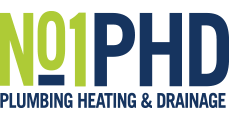
Duct Cleaning
Dirty ductwork in a Heating, Ventilation and Air Conditioning (HVAC) system is extremely hazardous. It can cause illnesses, such as legionella, if contaminated water droplets are scattered into the air, and breathed in. Or if cooking by-products, such as fat, are deposited in the ductwork, they can catch fire, often destroying an entire building. So it’s essential that ductwork is professionally cleaned. At No1PHD, we offer an array of commercial services and can supply an expert cleaning service that is cost-effective and thorough.
What Are The Regulations?
The Health and Safety Commission places a legal duty on building operators and owners, to clean their exhaust and ventilation systems, so that they do not present a hazard to employees, customers or the public. There is a duty to have the systems cleaned regularly, and to keep them in good condition.
TR19 is the standard developed by the industry, to demonstrate good practice in the cleaning of different types of ductwork. It’s published by the Building Engineering Services Association (BESA). Many building owners and operators are unaware of these regulations, until they have a problem such as a fire, when the insurer asks for documentation on the cleaning of the ductwork.
Some business operators are baffled by the technical terms in the TR19 guide – don’t worry, we understand them, and will ensure that your ducts are cleaned to the correct standard, including the required hygiene standards.
Thorough Cleaning Is A Must
Some building owners think it’s OK to clean as far up the ductwork as can be reached manually. Unfortunately, this isn’t adequate. BESA reckons that about a quarter of the fires that happen in business premises each year, are due to cooking and extraction systems. So this is a problem that needs professional and thorough treatment.
A build-up of fat on a cooking extract, will act as a transporter for the fire to other parts of the building. In premises such as hotels, where the extraction ductwork may travel up several floors, the entire building can catch fire, as flames are drawn through the extraction and ventilation system. Failure to clean the ductwork could invalidate your buildings insurance if it causes a fire.
Get Your Clean Ductwork Certified
When we clean a system, we issue documentation and certification. You can show this to your insurer, to prove that you have maintained your ductwork in a clean condition. In addition, our certification will show that you have complied with fire safety standards for the type of premises you occupy, and the business you are operating.
Hygiene Standards For Ductwork
Dirty ductwork isn’t just a fire hazard. The fat caught on the ducting is a favourite meal for rats and other pests. Their droppings can then spread disease throughout the extraction and ventilation system. Dirt clinging to the grease is also a breeding ground for bacteria – not what you want in a catering kitchen.
To deal with this problem efficiently and cost-effectively, take a look at our descaling and fat removal services for professional kitchens. We will remove any hazardous material that we find, and disinfect the ductwork if this proves necessary.
Can I Improve Access To The Ductwork?
Ductwork and extractor fans can be the elements that are hardest to reach in a ventilation system. So it’s difficult for regular cleaning staff to keep them clean. However, when they are dirty they don’t operate efficiently, and can increase your energy bill as well as decreasing air quality in the building.
One of the best practice advice tips in TR19, is to try and make hard-to-reach ductwork easier to access. Some business owners do this by installing trap doors near inaccessible ducts, to make inspections and cleaning simpler.
Contact No1PHD For Prompt And Efficient Service
Business owners often need cleaning to be carried out urgently. We can respond promptly, because we have local professionals available to deliver our service. So whether it’s an urgent call, a survey of your current ductwork, or a chat about regular cleaning, contact us today. Call 08006906777 or email us at, info@no1phd.co.uk



